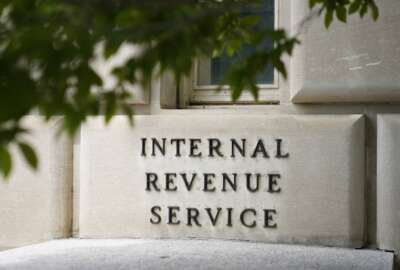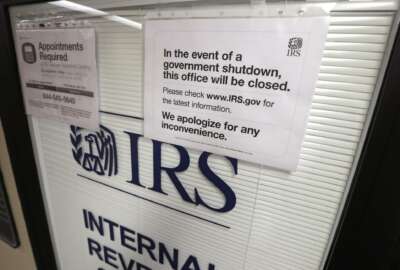IRS needs to use pay incentives more to keep up with hiring goals, watchdog warns
An IRS watchdog is calling on the agency to make better use of pay incentives already available to stay on track with plans to build up its workforce.
An IRS watchdog is calling on the agency to make better use of pay incentives already available to stay on track with plans to build up its workforce.
The IRS has more than a dozen pay incentives available to recruit and retain employees with skills that are essential to its operations.
But the Treasury Inspector General for Tax Administration, in a recent report, found the IRS only used these pay incentives to recruit, retain or relocate about 1,400 employees between fiscal 2019 and 2022.
The agency, during this period, made a total payout of $1.5 million through these incentives.
The vast majority of these payments — about $900,000 — went to IRS employees going back to the office at the height of the COVID-19 pandemic.
The agency in early 2020 gave certain employees a 10-25% pay increase for completing tax filing season tasks that aren’t possible through telework. The National Treasury Employees Union said the IRS ended the payments in June 2020.
The IRS spent the remaining $619,000 toward payments meant to recruit, retain or relocate employees.
According to TIGTA, the IRS will need to hire almost 26,000 non-IT employees this fiscal year, in order to keep on track with an agency modernization strategy, backed by $60 billion in Inflation Reduction Act funds over the next decade.
TIGTA wrote that the IRS “may miss hiring and employee retention opportunities involving mission-critical positions by not maximizing the use of appropriate special payment incentives.”
The IRS workforce reached nearly 83,000 employees at the end of FY 2022 — up from 75,966 employees in FY 2019.
IRS Commissioner Danny Werfel recently told reporters that the IRS is close to building its workforce back up to 90,000 full-time employees — a level of staffing the agency hasn’t seen in more than a decade.
IRS Chief Human Capital Officer Traci DiMartini told TIGTA that the agency “acknowledges that there are opportunities to expand the utilization of special payment incentives to achieve IRS staffing levels required by the Inflation Reduction Act.”
Among its changes, the IRS plans to develop a comprehensive, agency-wide strategy for using financial incentives to recruit and retain mission-critical occupations. DiMartini said the IRS expect to have this strategy completed by July 2024.
“IRS human capital management strategies and procedures must evolve and enable new ways of strategically working with business units to expand the usages of special payment incentives to aid in recruitment, relocation and retention efforts,” DiMartini wrote to TIGTA.
NTEU National President Doreen Greenwald told Federal News Network that the union” absolutely agrees” with the TIGTA recommendation that the IRS use special pay incentives to attract new hires, as well as to retain current staff.
“We’ve always said that the General Schedule already provides agencies with the tools to boost hiring in certain hard-to-fill positions or geographic locations, and these tools are often underutilized,” Greenwald said in a statement.
“Congress and the Biden administration have wisely agreed to rebuild the IRS after a decade of neglect, and investing in the workforce — customer service, enforcement, technology — is a vital first step to improving services for law-abiding taxpayers, catching tax cheats and reducing the federal deficit,” she added.
The Professional Managers Association, which represents IRS managers, told Federal News Network in a statement that the IRS has not had a historic need to use special pay incentives because the agency “struggled more with retention than recruitment.”
The PMA said the IRS faces more competition for entry-level talent from the private sector, which is generally offering higher wages and increased access to work-life benefits that include telework.
“As a result, the Service struggles to compete with private sector companies that offer higher pay, more flexible work schedules, and more accessible job sites. Given the current environment, PMA feels special pay incentives can be an extremely valuable tool to improve recruitment,” the PMA said in a statement.
The PMA said the IRS can also make better use of retention incentives, by offering them to management and technical positions, “to ensure the IRS’ most in-demand talent remains at the service.”
TIGTA recommends the IRS chief human capital officer should develop workforce planning initiatives to identify mission-critical positions on a recurring basis, and expand the use of special payment incentives to recruit and retain highly skilled non-IT organization employees.
Over 43,000 employees separated from the IRS between FY 2019 and 2022 — an 8.5% average three-year attrition rate by the end of FY 2022.
The IRS in fiscal 2022 lost 917 revenue agents, nearly 11% of the 8,719 revenue agents the agency employed at the beginning of the year.
TIGTA said Treasury Department and IRS officials cited dissatisfaction with developmental opportunities and pay as some of the top reasons for a high rate of turnover among revenue agents.
According to the Federal Salary Council, the federal workforce earned 22.47% less than private sector employees in 2022.
“To improve staffing retention, the IRS should consider expanding the use of retention incentives to encourage experienced revenue agents to remain with the agency,” TIGTA wrote.
The IRS, under the Inflation Reduction Act, plans to hire more than 10,000 employees before the end of this fiscal year, and nearly an additional 10,000 employees in fiscal 2024. Most of the hiring is focused on taxpayer services and enforcement.
When planning for attrition, the IRS expects a net increase of 5,000 to 10,000 employees per year.
Former IRS Commissioner Chuck Rettig told Congress in April 2022 that the agency will need to hire an additional 52,000 employees over the next six years just to maintain its current staffing levels.
Copyright © 2024 Federal News Network. All rights reserved. This website is not intended for users located within the European Economic Area.
Jory Heckman is a reporter at Federal News Network covering U.S. Postal Service, IRS, big data and technology issues.
Follow @jheckmanWFED






